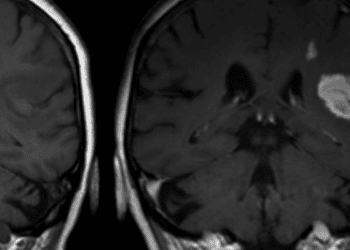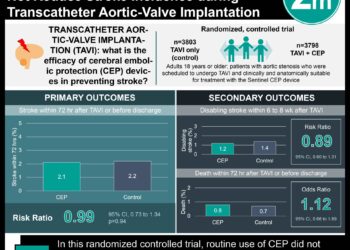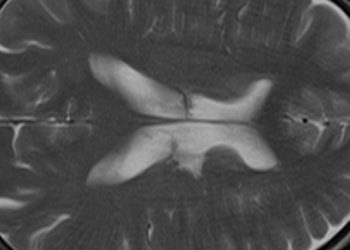2 Minute Medicine Rewind February 3 – 10, 2014
Image: PD
In this section, we will highlight the key high-impact studies, updates, and analyses published in medicine during the past week.
Intussusception Risk after Rotavirus Vaccination in U.S. Infants
The pentavalent bovine-human reassortant rotavirus vaccine (RV5, RotaTeq) and the monovalent human rotavirus vaccine (RV1, Rotarix) were introduced to the US market in 2006 and 2008, respectively, after the previously approved rotavirus vaccine RotaShield was pulled from the U.S. market due to its increased association with intussusception. The Food and Drug Administration commissioned this study to help rule out an increase in intussusception risk with RV5 and RV1. This retrospective cohort analysis studied the rates of intussusception in 507,874 patients receiving first doses and 1,277,556 patients receiving total doses of RV5 and 53,638 patients receiving first doses and 103,098 patients receiving total doses of RV1. There were two study designs: the primary analysis used self-controlled risk-interval design with only vaccinated children, whereas the secondary analysis used a cohort design including both exposed and unexposed person-time. Investigators found that the first dose of RV5 was associated with a significantly increased risk of intussusception in the primary analysis (attributable risk, 1.1 [95% confidence interval, 0.3 -2.7] for the 7-day risk window and 1.5 [95% CI, 0.2-3.2] for the 21-day risk window) and in the secondary analysis (attributable risk, 1.2 [95% CI, 0.2 to 3.2]). RV1 did not show a significantly increased risk by primary analysis but did show a significant risk after dose 2. This study therefore shows an approximate 1.5 excess cases of intussusception per 100,000 patients after the first dose of RV5, which must be weighed against the benefits of the vaccine.
The last adult blood pressure management guidelines were published by the JNC7 in 2003. This article reports the findings of the JNC8, which used rigorous evidence-based methods to address three main questions: 1.) In hypertensive adults, does starting antihypertensive medications at specific blood pressure thresholds improve health outcomes? 2.) In hypertensive adults, does using antihypertensive medications to reach certain blood pressure goals lead to improvements in health outcomes? 3.) In hypertensive adults, are there significant differences among the different antihypertensive drug classes? The main findings of the JNC8 was strong evidence for treating hypertensive patients > 60 y.o. to a BP goal of < 150/90 and hypertensive patients between 50-59 y.o. to a DBP of < 90. There was insufficient evidence for a treatment goal for hypertensive patients < 60 y.o. but expert opinion recommends BP < 140/90. There is moderate evidence for starting drug treatment with either an angiotensin-converting enzyme inhibitor (ACE-i), angiotensin receptor blocker (ARB), calcium channel blocker, or thiazide-type diuretic in nonblack hypertensive populations. In black hypertensive patients, JNC8 recommends a calcium channel blocker or thiazide-type diuretic. There is moderate evidence for improved kidney outcomes with additional ACE-i or ARB use in patients with CKD.
Reducing blood pressure for primary and secondary prevention of ischemic stroke has been validated. However, the effect of antihypertensives in improving outcomes in patients with acute ischemic stroke is unclear. In this randomized control trial, 4071 patients with ischemic stroke and elevated systolic blood pressure were randomly assigned to receive antihypertensive treatment with goal blood pressure < 140/90 within 7 days or no antihypertensives during hospitalization. Investigators found that the primary outcome, a combination of death and major disability at 14 days or hospital discharge, did not significantly differ between the intervention and control groups (683 vs 681 events, odds ratio 1.00 (95% CI, 0.88-1.14, p = 0.98)). Blood pressure reduction with antihypertensives does not appear to reduce risk of death or major disability at 14 days or at hospital discharge in patients experiencing acute ischemic stroke.
Current first-line treatment for schizophrenia centers around antipsychotic medications which often have side effects that are intolerable to patients. Investigators sought to assess whether cognitive therapy can offer benefits as an alternative for patients who do not take antipsychotics. In this randomized control trial, 74 individuals with schizophrenia who had chosen to not take antipsychotics were randomly assigned to receive cognitive therapy in addition to usual treatment or usual treatment alone. It was found that in comparison to controls, the intervention group had a significantly reduced mean positive and negative syndrome scale (PANSS) score with a between-group effect size of -6.52 (95% CI -10.79 to -2.25, p = 0.03). This shows that cognitive therapy may be an acceptable alternative for reducing psychiatric symptoms in patients with schizophrenia who choose not to take antipsychotic medications.
Metastatic breast cancer continues to have very few treatment options although several promising molecular targets have been identified. This study sought to assess the feasibility of using genomic methods to screen and treat patients with targeted therapy aimed at specific breast cancer genomic alterations. In this screening study, 423 patients with metastatic breast cancer accessible for biopsy were screened with comparative genomic hybridization (CGH) array and Sanger sequencing for the presence of specific targetable PIK3CA and AKT1 mutations. CGH array and Sanger sequencing was feasible in 67% and 70% of patients, respectively, and a targetable genomic mutation was present in 46% of patients. Personalized therapies were currently available for 13% of patients (55 patients). This study then proceeded to provide targeted therapy for 43 of those patients, 4 of whom had an objective response and 9 of whom experienced disease stabilization. This study shows that personalization of breast cancer therapy using genomic methods for screening is feasible.
©2012-2014 2minutemedicine.com. All rights reserved. No works may be reproduced without written consent from 2minutemedicine.com. Disclaimer: We present factual information directly from peer reviewed medical journals. No post should be construed as medical advice and is not intended as such by the authors or by 2minutemedicine.com. PLEASE SEE A HEALTHCARE PROVIDER IN YOUR AREA IF YOU SEEK MEDICAL ADVICE OF ANY SORT. Content is produced in accordance with fair use copyrights solely and strictly for the purpose of teaching, news and criticism. No benefit, monetary or otherwise, is realized by any participants or the owner of this domain.







